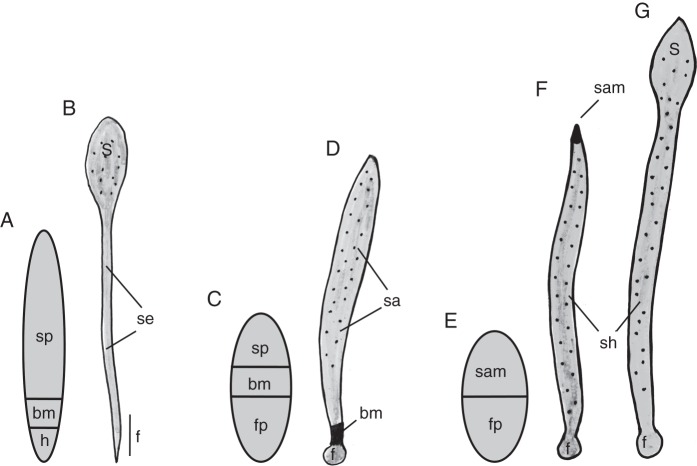Fig. 1.
Embryo and mature sporophyte in stomatophytes. (A, B) A putative embryo and sporophyte in ancestral stomatophytes; the embryo is assumed to consist, as in present-day mosses, of three organogenetic areas: a sporangium primordium (sp), a basal meristem (bm) and a haustorium (h); these generated, respectively, a sporangium (s), a seta (se) plus the upper part of the foot (f), and the lower part of the foot in the mature sporophyte. (C, D) An embryo and mature sporophyte in hornworts. (C) An embryo consisting of a sporangium primordium (sp), a basal meristem and a foot primordium (fp). (D) The basal meristem (bm) is active for sporophyte life and produces an indeterminate sporangial axis (sa). (E–G) A putative embryo, immature and mature sporophyte in an ancestral polysporangiophyte. The embryo is assumed to consist of an ancestral shoot apical meristem (sam) and a foot primordium (fp). Post-embryonic growth from the ancestral SAM produced a leafless, uniaxial indeterminate sporophyte shoot (sh) and eventually a terminal sporangium (s). f, sporophyte foot. Stippling indicates stomata. The embryo stages are not to scale with the other stages.

